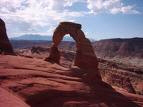Multiple Choice
Identify the
choice that best completes the statement or answers the question.
|
|
|
1.
|
Which of the following is not considered a rock classification?
a. | magma | c. | igneous | b. | sedimentary | d. | metamorphic |
|
|
|
2.
|
Which rock is formed from rock particles being compacted and cemented
together
a. | sedimentary | c. | metamorphic | b. | igneous | d. | sediment |
|
|
|
3.
|
Mudstone is a rock formed from silt or “mud” particles, which type
of rock classification is correct for mudstone?
a. | sedimentary | c. | metamorphic | b. | igneous | d. | magma |
|
|
|
4.
|
Coal is formed when plants die and are compacted and cemented together, identify
the type of rock classification for coal.
a. | sedimentary | c. | metamorphic | b. | igneous | d. | cement |
|
|
|
5.
|
The lava in Hawaii cools to form which type of rock classification?
a. | igneous | c. | metamorphic | b. | sedimentary | d. | magma |
|
|
|
6.
|
Magma may cool under a volcano to form this type of rock
a. | igneous | c. | metamorphic | b. | sedimentary | d. | lava |
|
|
|
7.
|
Rocks that have been twisted, bent, squeezed, or pushed together cause the rock
to recrystallize and form a different type of rock
a. | metamorphic | c. | igneous | b. | sedimentary | d. | magma |
|
|
|
8.
|
A rock may change from an igneous rock to a sedimentary rock by
a. | eroding, compacting, and cementing | c. | heat and
pressure | b. | melting | d. | cooling and crystallizing |
|
|
|
9.
|
The Earth is constantly changing due to water traveling over land, the process
of water taking rock particles away is called
a. | erosion | c. | plate tectonics | b. | climate | d. | volcanics |
|
|
|
10.
|
The Earth’s crust is made up of many sections that move in many different
directions
a. | plate tectonics | c. | meteorology | b. | rock cycle | d. | mineralogy |
|
|
|
11.
|
Volcanoes are a result of
a. | magma moving up through cracks in the Earth’s surface | c. | the Moon’s
gravitational pull | b. | lightning striking the ground crating
lava | d. | the sun heating up
rock to the point of boiling |
|
|
|
12.
|
Plate tectonics may cause all of the following EXCEPT
a. | ocean tides | c. | earthquakes | b. | mountain building | d. | volcanoes |
|
|
|
13.
|
This type of erosion causes the most change on the Earth’s surface
a. | water abrasion | c. | glacier abrasion | b. | wind abrasion | d. | radiation from the
Sun |
|
|
|
14.
|
Volcanic eruptions may create all of the following EXCEPT
a. | air pollution | c. | earthquakes | b. | new landforms | d. | photosynthesis |
|
|
|
15.
|
The tilt of the Earth’s axis, relative to the Sun, causes
a. | changes in the seasons | c. | the phases of the moon | b. | day and
night | d. | sun
spots |
|
|
|
16.
|
Which of the following occurs when the crust of the Earth moves suddenly at a
fault line?
a. | earthquake | c. | tornado | b. | hurricane | d. | flood |
|
|
|
17.
|
Ammonite fossils have been found in the Himlayan mountains, the highest mountain
range in the world. Ammonites live in the ocean, what is your best conclusion about the history
of the Himlayan mountain range?
a. | erosion must have moved the fossils | c. | the ammonites evolved to live on
land | b. | Birds deposited the shells while eating | d. | the Himalayas must have been pushed up out of
the sea by plate tectonics |
|
|
|
18.
|
What do we call the scientific theory that says the Earth is sectioned into many
parts that move among each other and shift over time?
a. | drifting | c. | continental motion | b. | plate tectonics | d. | lave motion |
|
|
|
19.
|
Which of the items below is NOT a force of weathering?
a. | wind | c. | asphalt | b. | water | d. | chemicals |
|
|
|
20.
|
 Which force of erosion most likely created this
arch formation? a. | chemical | c. | water | b. | human | d. | wind |
|


